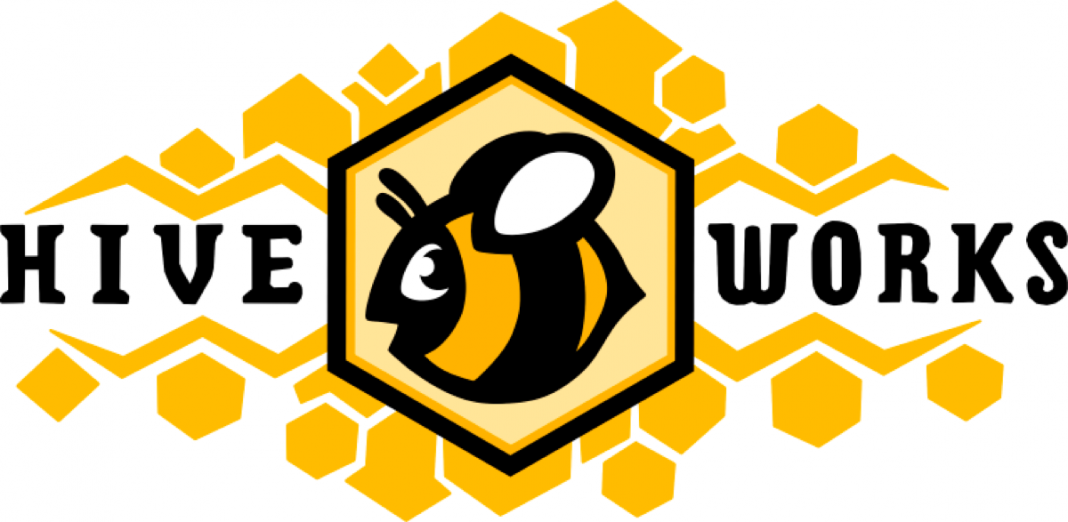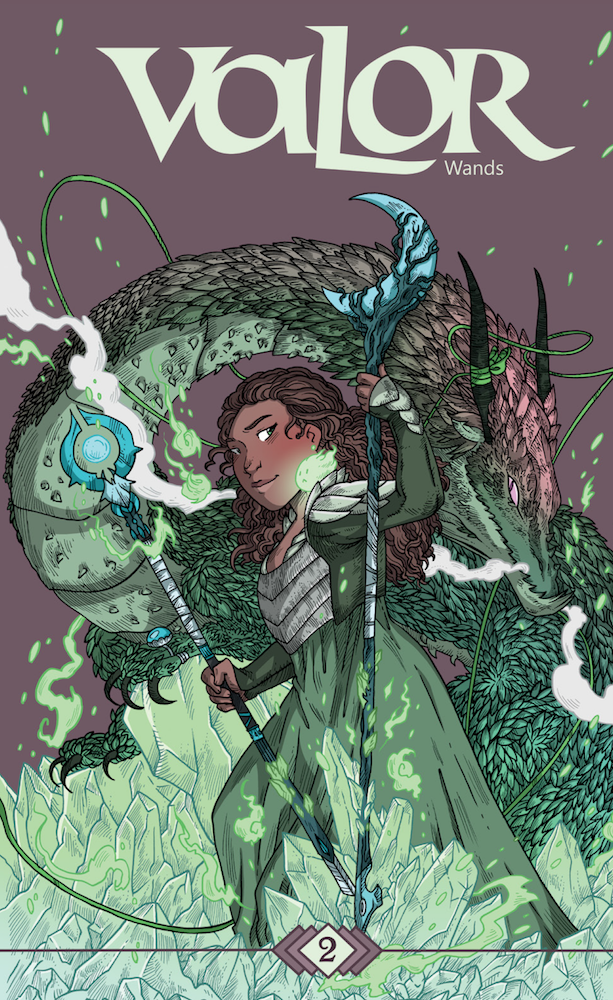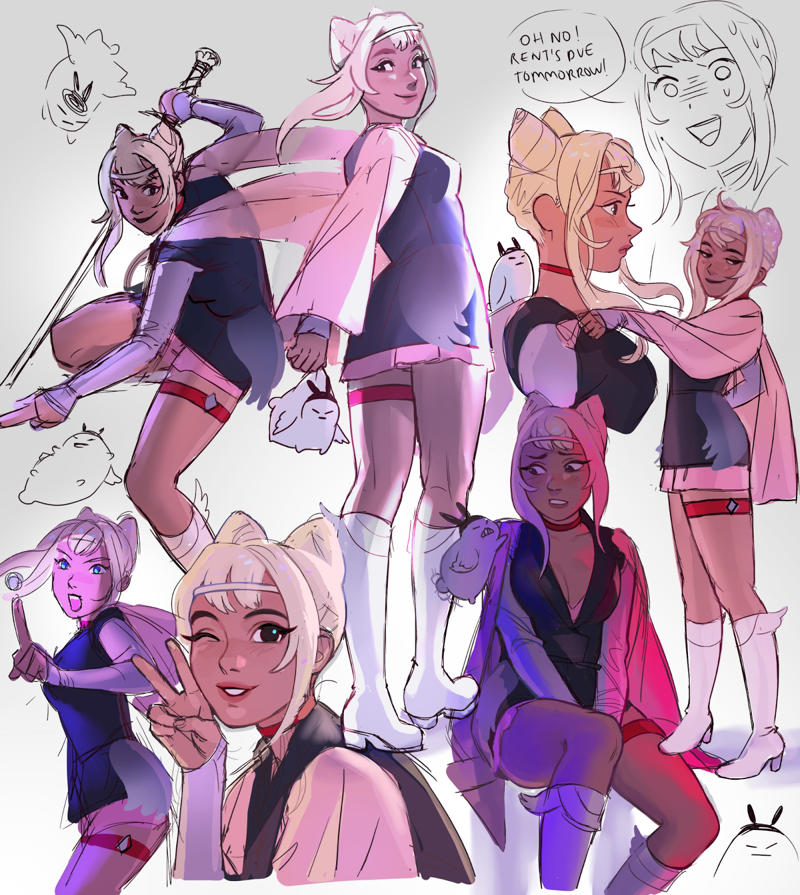With webcomics more in the news than ever, I thought it was time to talk to the folks behind Hiveworks, a community of independent creators with a unique — and successful — model. Rather than a standalone site like Tapas and WebToon, Hiveworks is a network of comics, backed by a team that provides publishing and website support. Among their most popular comics: Saturday Morning Breakfast Cereal, Dumbing of Ages, Girl Genius, Wilde Life, Sleepless Domain, Awkward Zombie and Stand Still Stay Silent. Their biggest publishing hits include Persephone and Stand Still Stay Silent.
The Hiveworks team is headed by Isabelle Melançon, Erin Burt and Xellette Stillwell, who oversee various aspects of publishing, monetization and tech. Isa and Xellette were gracious enough to answer some questions by email about how they work and their growing partnerships — including a publishing deal with Seven Seas.
Disclosure: The Beat was hosted by Hiveworks from 2015 to 2017, and they still operate one of our ad networks. I found working with them a great experience, and in a world where a webcomics site can sell for half a billion dollars, it’s exciting to see a grassroots organization based on creator control succeed.
THE BEAT: First off, can you explain what Hiveworks is, for those who don’t know? I know your logline is “Hiveworks Comics is a creator-owned comics and graphic novel publisher focused on free to read webcomics,” and I know you are often mentioned with Tapas and Webtoon, but you have a very different model.
Isabelle Melançon: I feel we are compared to Webtoons and Tapas often because we focus primarily on webcomics and digitally distributed works, as they do. However, as you said, we have a different focus than them, and a more small-scale approach.
Hiveworks was founded in 2011, in an environment where working on a webcomic was very solitary work, and creators had to do everything. A lot of the tools creators commonly use now, such as Patreon, Gumroad, Ko-fi, and Kickstarter, were still new. We wanted to create a community of artists that could grow together, and to which we could offer numerous services so they would have assistance, and the advantages of being a larger group.
We design comic sites and back ends such as Comic Control, help creators publish online, offer editorial assistance, manage ads, manage a store and warehouse, design and print books, manage crowdfunding campaigns, etc. Through partners such as Seven Seas, we also aim to get creator-owned webcomics sold in stores, and we have helped several creators have their work printed in other languages.
You can see Hiveworks as a cross between an artist collective, a traditional publisher, and a web content manager. We do have a few comics that we publish as a print publisher would do, such as Tiger Tiger and Vainglorious, but the bulk of the services we propose are aimed at independent creators.
Based on what I know of companies like Webtoons and Tapas, they have a section where creators can post their comics independently and a section where creators are paid to produce work, but printed goods are not a focus for these companies. We do not have an open user platform, or a reader platform approach overall. We customize each site to the comic’s style & page size.
We are basically a digital medium scale publisher; we are not affiliated with a larger company, as these reading apps are. As a fun bonus, basically all our staff is composed of LBTQ+ creators.
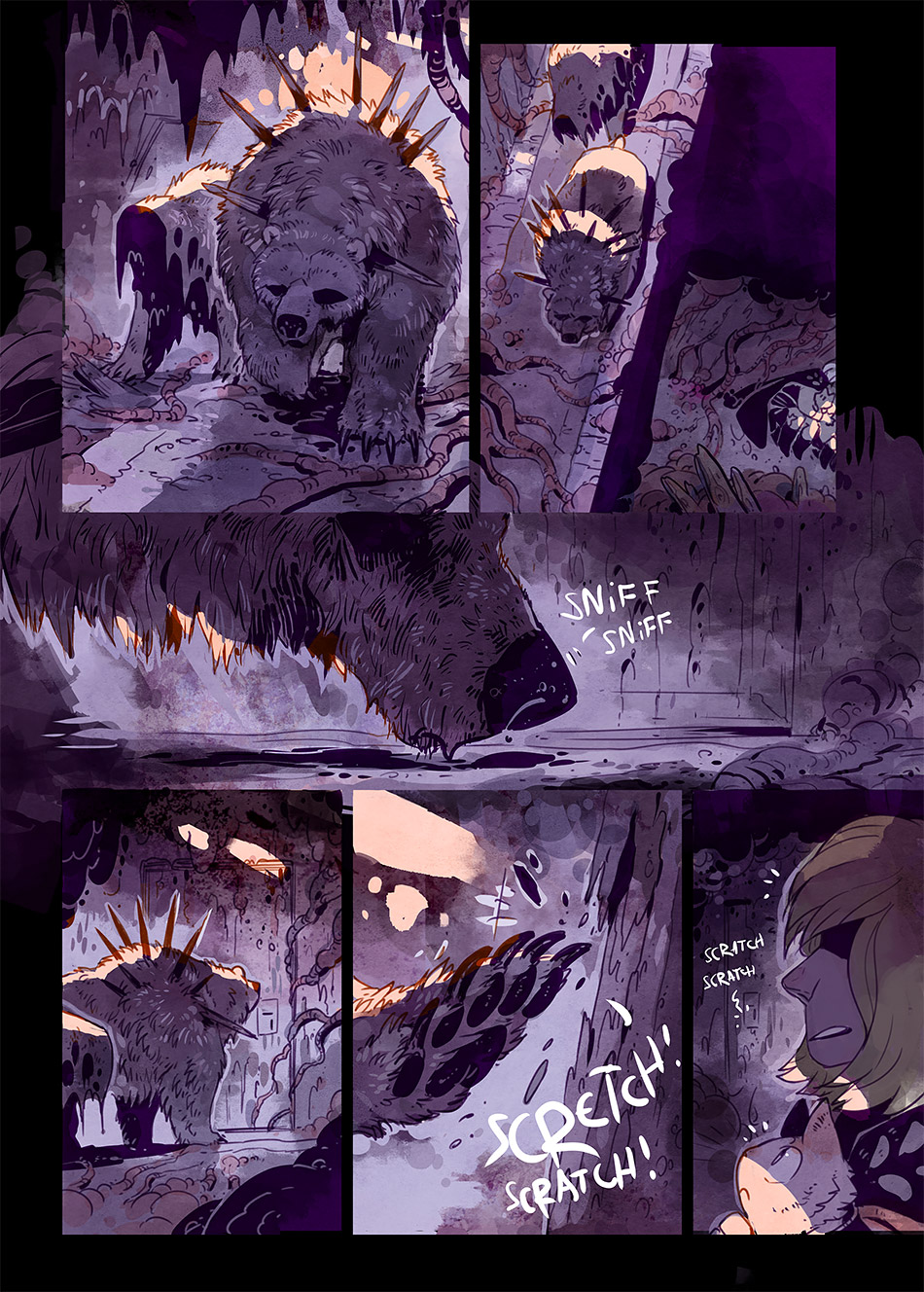
Xellette Stillwell: As Isa said, Hiveworks is a patchwork of different things. We do publishing, marketing, ads, technology, though in general our aim is to be a solution so artists can keep their work independent. At the end of the day, we work with artists so they can have much more control of their brands and try new things.
Our approach is that if there’s a problem for our artists, we find a solution.
THE BEAT: I guess I would call Hiveworks a decentralized model — if a webcomic joins Hiveworks, they still have their own website. How does being part of your platform work?
Isa: The plus of assembling all the comics on a platform is that they are all assembled in one place. The downside is that the platform itself becomes the pushed product, more than the individual comics. We try to keep each comic in its own space (united by our update jumpbar, internal ads and our adorable bee logo) so that creators have a space they can really customize to their work, and this keeps the comics to the forefront of our promotions. The comics stay the focus. We think it’s important to do that because our approach is to give creators personalized services.
THE BEAT: How does a webcomic join the Hive? Is it usually you reaching out or someone coming to you?
Isa: We usually have submissions open. They are currently closed due to our team needing a well-deserved break as the pandemic continues into its second year, but that is how we get a lot of our artists. We also contact people directly to invite them in if a project catches our eye on social media, and sometimes, current Hiveworks artists propose the pitch of a colleague.
THE BEAT: As a collective, do you help cartoonists with the business end of things? I know a lot of cartoonists have different skill sets, so some want help with printing and kickstarters… and some are one-stop shops. How do you work with them?
Isa: The services we offer are usually customized to the artist’s needs. As you say, some are more comfortable handling more than others. We provide artists with the services they request. In my experience, everyone likes having help with book design, Kickstarters, and editorial! We have staff that do pre-press work for the books, we help with cover design, we have a few printers we use regularly, and a warehouse, so we can fulfill Kickstarters and ship out products. We also have several editors on staff who help creators with planning their story and managing their planning.
THE BEAT: Of course, we have seen a huge surge in interest over the last few years with “mobile platforms” such as Webtoons and Tapas. What kind of readership trends have you seen over the last year? Did the pandemic have an effect?
Isa: Readership has stayed stable for us, though we had to deal with a bit of artist morale going down. We did our best to keep everyone feeling supported.
Xel: Overall our audience has been about the same if not slightly elevated; the main impact from the pandemic has been an impact on shipping rates for our warehouse. A lot of international mail is delayed or expensive to send.
THE BEAT: Isa, you have put together a lot of the Hive’s printed work, including anthologies. Are those still something you are doing?
Isa: I still oversee basically every book we produce, though I get a lot of help from other staff folks for prepress and design (which is very appreciated). I have a ton of fun designing Hiveworks books with artists. The books all look so good! I love them! We always get compliments for how pretty they are.
Due to an illness and covid, I’ve yet to complete work on my most recent anthology, so I think I will step down from doing any new ones for a time after Valor 3 work is completed. They represent a ton of work, and I would like to focus a bit more on my assigned Hiveworks comics while I heal. When I started creating anthologies, I was younger and had less editorial work on my hands and more energy to burn.
When it comes to personal work, my webcomic Namesake is entering its final arc after 10 years of publishing online and that’s very exciting, so I’m very motivated to focus on that. I’ve also got another webcomic in the works with Inês Bravo as the artist – @inesmbravo on Twitter – and me as the writer called Trinket about magical girls in space. This will also be a Hiveworks comic.
(Art above by Inês)
THE BEAT: Are you still doing the Originals line? How does that work?
Isa: We are! Mainly, it is a page rate system akin to what a traditional publisher would do. The goal is to have a few series as permanent features of Hiveworks. Right now that would be Blindsprings, Vainglorious, Tiger Tiger, Cut Time, Sleepless Domain, Magical How, the just launched Alexander, the Servant, and the Water of Life, and the upcoming ‘Aria of Fate’ (working title). I think this side of Hiveworks will probably keep growing over time, but we do aim to support independent folks as our main gig.
THE BEAT: Last year you announced a print partnership with Seven Seas; how did this deal come together? Do you publish books yourselves or would you consider it?
Isa: We’ve always been somewhat in contact with Seven Seas, as people on their staff have worked with us as creators before. We had a few discussions in 2019 and 2020 and agreed that it would be beneficial for both of us to form a partnership on a few projects, mainly to get webcomics distributed in stores while creators still own all the creative rights and “streaming” (i.e. publishing online) rights. I know there are a lot of people who would like to have their books in stores but are not ready to make a deal with a big publisher and risk having to take the webcomic down, or change it, or redraw it. They still want to control how their work continues and exists. Seven Seas has a huge background in licensing works, so they are used to working with other publishers. They were willing to give us the flexibility we wanted for our artists, and that’s great! I think the Seven Seas clientèle is going to greatly enjoy Hiveworks titles, as a lot of web-based creators adore manga and have it as a big inspiration.
THE BEAT: There has been a lot of talk of late about just how webcomics are monetized. What are the ways a webcartoonist can support themselves in 2021?
Isa: Diversification is the biggest thing. Set yourself up to be able to collect ad revenue, set up Ko-fis and Patreons, put up a little ebook store, maybe a merch store if you can (but ideally be more active with digital products as they have no base cost), be active on social media, etc. The more this goes, the more artists must put on more hats. It is a bit of an unavoidable progression as creators online have become more and more “content creators”; you always have to be doing a little something. Lately, we even saw job offers for artists, including the influencer aspect (only artists with a certain following could apply). My main recommendation, I think, is to create more digital short works. Easy to sell, no cost to ship, high demand. Although the biggest thing to remember is that there’s also no specific how-to guide with guaranteed results. Talk to other creators, try stuff, see what works for you, don’t overcommit to things that bring you discomfort.
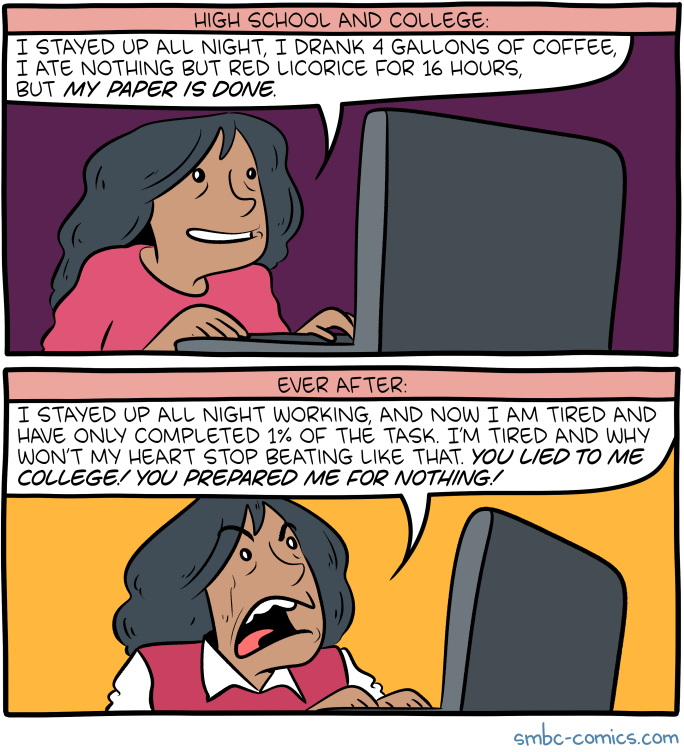
THE BEAT: Xel, you and I talked a little about NFTs when we were planning this interview, and you have some strong feelings about them, even beyond the environmental issues. People keep claiming that they can help artists control their work, but I haven’t seen the evidence for that yet. Beyond the fad nature of things like Beeple, do you think NFTs and Blockchain have any practical application for cartoonists?
Xel: I think the core issues around them are they aren’t needed. There’s already systems and platforms for the sale and ownership of art, that are much cheaper, have less impacts, and are more established/reputable. Ignoring everything else, the marketplaces are highly unregulated and theft of art is rampant. Crypto can possibly have a time and a place, though in this use case there’s no benefit from it. The only gains are through obfuscation of transactions and generating a bubble. What is novelty of product worth measured against utility; this is a min/max of that question.
I don’t think it’s wise for companies to invest into this; the comic bubble of the 90’s wasn’t good for the industry and it isn’t a good move to invite another one. Most of the value in this stuff is going to be gone in a few years, the market’s down 50%+ from peak and is tied to greater crypto trends. This isn’t about art; it’s about arbitrage through artificial financial vehicles, I’m not even sure if this is a bubble in the traditional sense but a way to try and make utility out of crypto assets. It really doesn’t seem like an area comic companies have the expertise to go near. Why go through a crypto marketplace; why not an auction system; why not a regular marketplace. The demand isn’t content bound; it’s instrument bound, and personally I think it’s a pretty bad instrument.
(Head over to Hiveworks and start discovering lots of great comics.)


